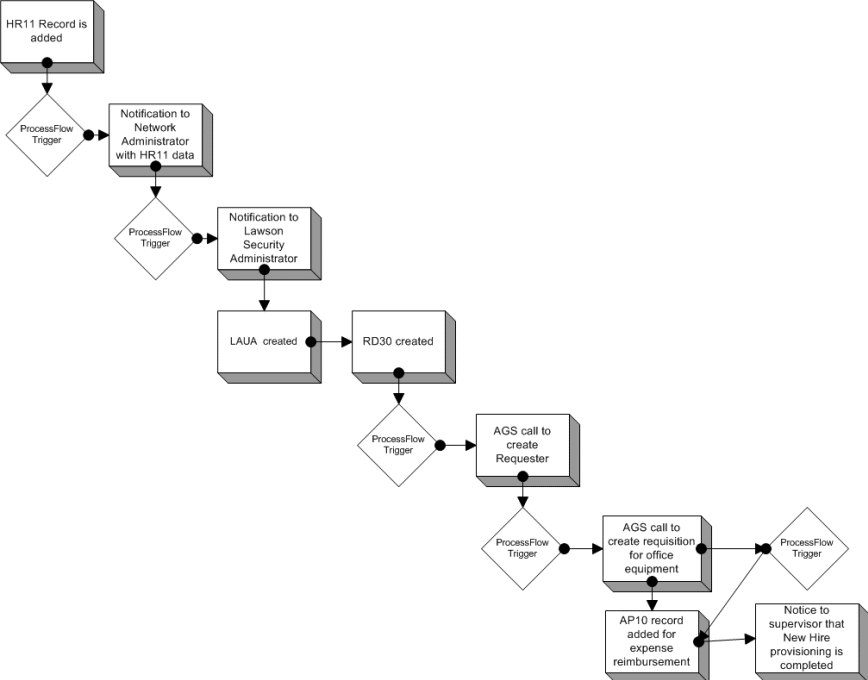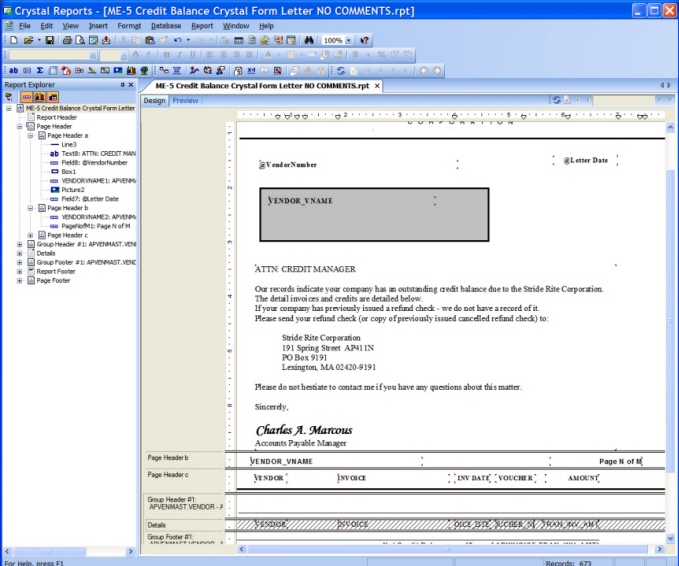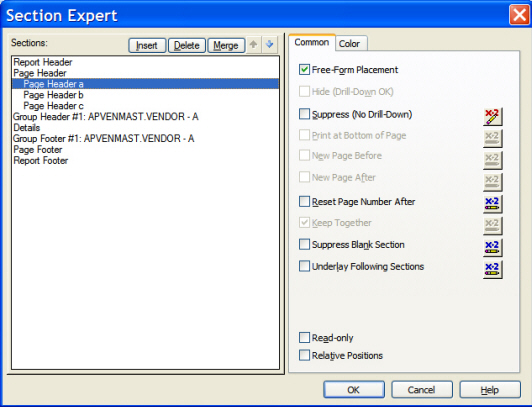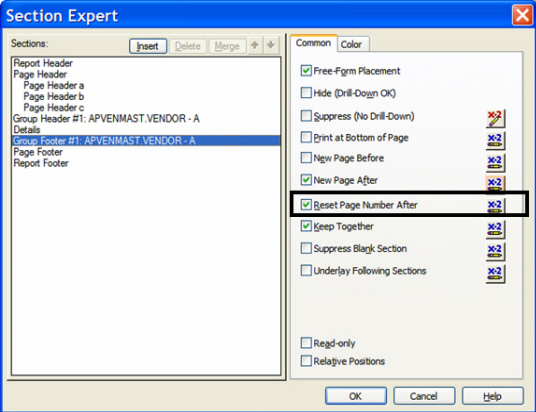|
 |
|
|
|
|
 |
October 2006
|
 |
| |
|
|
|
| |
Click here to forward to a colleague |
|
|
| |
|
|
|
| |
In this issue:
1. RMI (In)stability
2. Lawson ProcessFlow: You own it. Use it.
3. Worthwhile Reading
4. Lawson Tips & Tricks
The LawsonGuru Letter is a free periodic newsletter providing provocative
commentary on issues important to the Lawson Software community.
The LawsonGuru Letter is published by—and is solely the opinion of—John
Henley of Decision Analytics.
Visit Decision Analytics at
https://www.danalytics.com. For subscription information, see the
bottom of this message.
The LawsonGuru Letter is not affiliated with Lawson Software. |
|
|
| |
|
|
|
| |
1. RMI (In)stability |
 |
|
| |
|
|
|
| |
Over the past several months, I’ve been
collecting your comments about stability issues
regarding RMI. As many of you know, RMI is used by
Lawson Internet Object Services (IOS) to communicate
between IOS and the Lawson ERP applications. In other
words, it’s a critical component of Lawson’s “technology
stack”, and is, literally, the backbone of Lawson
Portal. Without it, Portal will not work. And for many
of you, RMI instability is a real serious problem.
The good news is that, with Lawson System Foundation (LSF)
9.0, your RMI issues should disappear, since Lawson’s
RMI component is replaced by an IBM Websphere component,
hopefully proving to be more stable. However, even with
a rapid adoption of LSF 9.0 by Lawson’s clients, many
organizations will continue to be running Lawson
Environment/IOS 8.0.x (and therefore RMI) for the
foreseeable future.
In order to gauge how prevalent these problems are, I
solicited your feedback on these questions:
-
How are global and/or 24x7 organizations dealing with
having to restart RMI unexpectedly?
-
What versions, ESPs, patches, settings, etc. seem to
make it more stable?
-
What software combinations and/or platforms
(Tomcat/Apache, Tomcat/IIS, Websphere, etc. etc.) seem
to perform the most reliably?
-
If you've suffered from RMI instability, have you
contacted Lawson? If so, were you satisfied with their
response?
Here are your responses:
How are global and/or 24x7 organizations dealing with
periodic RMI restarts?
 |
We have had problems with RMI
for the past year and a half and have had to
recycle it every couple of months during the
day. But every once in a while it just gets out
of whack and requires many recycles in a short
period as it has in the past few weeks. Usually
they are unexplainable. In any event, we
recycle RMI every night during our backups
(we have a three hour down time window). |
 |
In the past three weeks, we
have had to recycle RMI about 4 times. Normally
simply recycling it has fixed it in about 10
minutes but nonetheless, that is still downtime
that the users do not like. Last week it simply
would not recycle; for some reason the port that
it uses to connect to the application was
blocked. Even though our monitors said RMI was
started, it could not get through the port to
communicate with the application. We had to
reboot our web servers several times before the
port got released. We do recycle RMI every
night during our backups (we have a three
hour down time window). |
 |
We have a weekly scheduled
downtime from 10:30 pm to midnight on
Wednesdays. We use this time to recycle the
entire Lawson system every week. This seems
to help prevent issues with RMI. |
 |
With RMI crashing so
frequently, we automated a "RMI restart"
process, which is a script that runs on the
Unix application server. The script checks
RMI every 15 minutes with a simple TCP syn
command to see if RMI is responding or not. If
there is not a reply within a few seconds, the
script restarts RMI--at first gracefully, but if
that fails, it will do so forcibly. As the last
step, the script reboots the Windows Web server
that is running IOS remote. |
What versions, ESPs, patches, settings, etc. seem
to make it more stable?
 |
We haven't found any ESPs or
patches that made things more stable. When we
were on 8.03.ESP4 we were promised that things
would improve greatly once on 8.03.ESP6. In
fact, things initially were much worse after our
environment upgrade. |
 |
We are on 8.0.3.6 environment
running SunOne 6.0 web server/servlet - we have
to restart portal about monthly.. This is
definitely more stable than 8.0.3.ESP5 - it was
weekly. When we were running 8.0.3.5 environment
- Lawson said that before they would help us we
needed to go to 8.0.3.6 – not a very receptive
answer. |
What software combinations and/or platforms seem
to perform the most reliably?
 |
The main thing that seemed to
help was shortening our LIBPATH statement.
Lawson said they've seen issues when this was
too long, although they couldn't quantify what
was too long. Additionally, increasing our java
min/max size in the RMI start script and Tomcat
start script. |
 |
We reboot our server once a
week. We rarely if ever need to restart RMI. In
any event, our configuration is: Windows 2003/IIS
6.0; Java 1.4.2-11; Tomcat 4.1 Lawson Env/IOS
8.0.3.6. |
 |
The most reliable RMI at this
point in time is Websphere application Server
6.0. Very few are on it at this time. It has the
most scalability. It is now supported as of
8.03.ESP7 for all Platforms. |
 |
Most robust Tomcat
installation is free standing Apache 2.0.X and
Tomcat 5.0.28 on a Unix server by itself running
remotely. |
If you've suffered from RMI instability,
have you contacted Lawson? If so, were you satisfied
with their response?
 |
We have had issues with the
stability of RMI. We are using AIX 5.1,
Environment 8.0.3.ESP5 and periodically the RMI
process will crash or hang, causing Portal to
become unavailable. Lawson created a ticket for
us; it has been open since last year, and we
have not gotten any updates since then. When the
process does crash, we receive a java core dump,
which indicates a SIG Fault in the lacobrts.so
library. We have sent Lawson copies of these
dump files, but it does not appear to have
helped them resolve the issue. |
 |
When we were running 8.0.3.5
environment - Lawson said that before they would
help us we needed to go to 8.0.3.6 – not a very
well-received answer. |
 |
In most cases, we are able to
fix RMI issues ourselves but we did contact the
GSC to help with one occasion. After a little
prodding, we were able to get two support people
on a conference call to resolve the issue. Their
initial attempts did not work but after some
additional steps, they were able to point us in
the right direction. I am not a big fan of the
GSC, but on this occasion--when it was a system
down issue--they performed quite well. They
stayed on the phone until we resolved it.
|
 |
Lawson's response to the RMI
stability issues has been non-existent. We have
tried all the suggested tweaks, changes, and
patches that they have suggested, and RMI
stability continues to be abysmal for an
Enterprise Production application. So far Lawson
has been the most unstable of all the Enterprise
apps that we have installed. Lawson's latest
response to the RMI stability was that they will
not fix the problem with ESP5--that we must
upgrade to ESP6 for them to continue
troubleshooting. |
 |
We have approximately 12,000
employees, and roughly 900 Lawson users. We
rolled out the portal a couple of years ago, but
we have users that refuse to use it because it
isn't as stable as LID. We have opened several
tickets with Lawson but never really seem to get
things fixed. Most recently, we increased our
java memory settings, which seems to have
decreased the number of complaints but hasn't
entirely fixed the problem. |
 |
We have opened several
tickets with Lawson, and even spoke with their
RMI "guru" at Lawson CUE, but haven't gotten
much help. They won't give any advice or
recommendations regarding Tomcat/Apache. They
have told us that the behavior we have seen with
RMI isn't normal, but they can't say what is
making it crash or cause users to timeout. |
Well, there you have it. Next month we'll look
at some techniques for increasing the stability and
scalability of RMI. |
|
|
| |
|
|
|
| |
2. Lawson ProcessFlow: You own it. Use it. |
 |
|
| |
|
|
|
| |
Lawson ProcessFlow: If you own it, why
not use it?
ProcessFlow; Most Lawson clients don't understand it, or
appreciate its potential. You may not even realize that
you own it.
If you are like many Lawson clients, ProcessFlow was
installed as part of your initial setup and likely
hasn't been touched since. Maybe your implementation
team set up some initial flows to approve requisitions
and you've never revisited the idea of utilizing
Lawson's ProcessFlow products to automate more of your
business processes. If you were part of the Lawson sales
cycle, you may remember ProcessFlow being a major
selling point for ERP.
For example, you can use ProcessFlow to implement
systemic consistencies, which are central to achieving
regulatory and/or voluntary compliance, e.g.
Sarbanes-Oxley. As opposed to the knee-jerk reaction of
adding LAUA security, a tool limited to the separation
of duty and data - your goal should be to become a
process-driven, rather than function-driven,
organization.
The key, of course, is ProcessFlow. Every significant
business action (e.g. adding an employee, releasing an
invoice, etc.) which requires coordination across your
organization could trigger a corresponding ProcessFlow.
You can choose from some of Lawson’s delivered
triggers—here is a sampling:
|
System Code |
Program |
Name of Trigger |
|
AC |
AC10 |
Activity
Addition Approval |
|
AC |
AC12, AC112 |
Activity Status
Change |
|
AC |
AC65, AC165 |
Activity
Contract Complete |
|
AP |
AP20 |
Invoice Balance
Match Edit
No Receipts in Match Pool
PO Cost Discrepancy
Unmatch Invoice |
|
AP |
AP25, AP26,
AP125, AP126 |
Invoice
Approval
Unmatch Invoice |
|
AR |
AR09 |
Customer BillTo
Address Change |
|
AR |
AR10 |
Customer Add or
Credit Limit Change |
|
AR |
AR29 |
Transaction
Transfer |
|
AR |
AR44 |
Transaction
Grouping |
|
AR |
AR45 |
Disputed
Invoice |
|
AR |
AR82 |
Return to Maker
Payment |
|
BL |
BL02 |
Customer ShipTo
Added |
|
GL |
CA190 |
Cost Allocation |
|
GL |
GL40, GL45,
GL75, GL170 |
Journal Entry
Approval |
|
PA |
PA42 |
Job Requisition
Approval |
|
PA |
PA52 |
Personnel
Action Approval |
|
PO |
PO20
|
Activity Budget
Exceeded |
|
PO |
PO30, PO35 |
Requisition
Item Received |
|
PO |
PO34 |
Inspection Item
Rejected |
|
PO |
PO35 |
Inspection
Required |
|
PO |
PO122 |
EDI PO
Acknowledgment |
|
RQ |
RQ10 |
Activity Budget
Exceeded
Rush Item
Requisition
Approval |
|
WH |
WH30, WH31,
WH32 |
Shipment
Backordered or Voided |
You can also create your own where
needed. This can be done with just a few lines of code
inserted into the user exit of the application code. Or,
if you’re using Lawson Design Studio, you can add your
trigger for ProcessFlow from a Portal form. Either way,
it’s supported and maintainable.
Think of the typical orchestration that is required when
you hire a new employee. Why not use ProcessFlow
Integrator to handle all the updates/notifications that
are needed for IT accounts, asset provisioning (i.e. new
computer, desk, furniture, etc.) and security access,
orientation/training, etc:

Once you become process-driven, you can use the metrics
collected by ProcessFlow to determine where your
bottlenecks are. And with automatic escalation, you can
re-route flows that sit in someone’s Inbasket too long.
Finally, if you’re using (or starting to look at) LSF
9.0, you’ll want to check out the new features that
Lawson merged from BCI into ProcessFlow to create
ProcessFlow Integrator 9.0. With these new capabilities,
like SQL queries/updates, reading/writing files, etc.,
this is your opportunity to re-architect that kludgey
mess of scheduled jobs/shell scripts/user tokens, etc.
you probably call “integration”.
So, how about it--are you ready? Start driving your
business with ProcessFlow, and you’ll wonder how you
lived without it!
|
|
|
| |
|
|
|
| |
3. Worthwhile Reading |
 |
|
| |
|
|
|
| |
What's The Greatest Software Ever Written?
- QUOTE OF THE ISSUE –
“The measure of success is not whether you
have a tough problem to deal with, but whether
it's the same problem you had last year.”
-- John Foster Dulles
Witness the definitive, irrefutable, immutable ranking of
the most brilliant software programs ever hacked.
Information Week, August 14, 2006
http://www.informationweek.com/story/showArticle.jhtml?articleID=191901844
20 Great Ideas From InformationWeek 500 Companies
They're an innovative bunch. There's probably a notion or two
worth borrowing for your business.
Information Week, September 11, 2006
http://www.informationweek.com/story/showArticle.jhtml?articleID=192600619
Home Delivery
Frustrated by chasing down endless — and endlessly changing — information,
some corporations are turning to RSS.
CFO Magazine, July 2006
http://www.cfo.com/article.cfm/7108888/c_7129649
|
|
|
| |
|
|
|
| |
4. Lawson Tips & Tricks
|
 |
|
| |
|
|
|
| |
Share your Tips & Tricks. Send them to
mailto:letter-tips@lawsonguru.com.
You can view other Tips & Tricks on the
Tips & Tricks page on LawsonGuru.com.
Conditionally Printing Page Headers in Crystal Reports
(This month's tip comes from Charlie Marcous at Stride Rite
Corporation)
Last month's tip issue (see
https://www.danalytics.com/guru/letter/archive/2006-09.htm) included one
for Crystal Reports, which combined formulas across the group header, group
footer, and page header to print "This Group Continued on next Page".
Charlie has been successful in doing something very similar with a
different approach - namely combining several functions to conditionally
print page headers on subsequent pages only when printing form
letters from Crystal:

Use a "suppress formula" in Page Header a:

//formula to suppress Page Header a:
PageNumber > 1 |
Then in the Group Footer, reset the page number after printing the
vendor:

|
|
|
| |
|
|
|
| |
© Copyright 2006, Decision Analytics. All rights reserved.
|
|
|
|